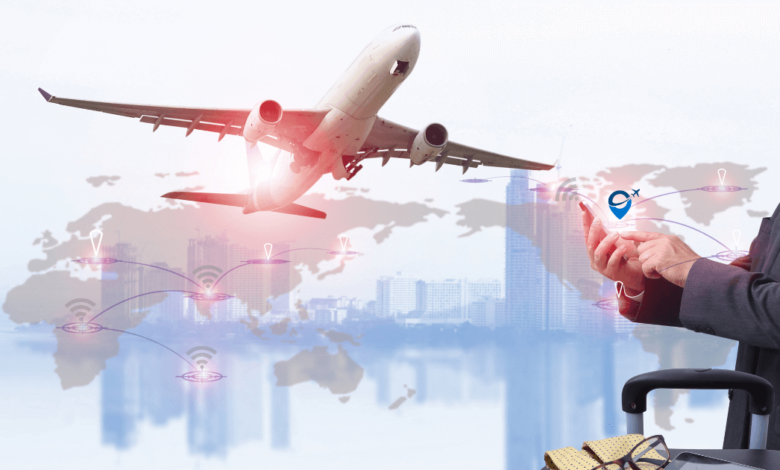Effective Tips to Stay Connected on Your Business Trip

In today’s hyper-connected world, maintaining reliable communication while traveling for business isn’t just convenient—it’s critical. Missing an important email or being unable to join that crucial video call can potentially derail deals or damage client relationships.
Yet despite modern technology, staying connected on business trips remains surprisingly challenging. From unstable Wi-Fi in hotels to international roaming charges, connectivity issues continue to plague business travelers worldwide.
This blog shares practical tips to keep you online, no matter where your next business trip takes you.
Preparing Your Connectivity Strategy Before Departure
Before boarding that flight, taking time to develop a comprehensive connectivity plan can save you countless headaches and potential communication disasters.
How to Choose the Right eSIM for Your Destination
Selecting the appropriate eSIM requires understanding your destination’s network landscape. Research coverage areas, data speeds, and pricing structures before departure. According to recent data, eSIM adoption has grown by over 20% annually between 2024 and 2034, highlighting its increasing popularity among frequent travelers.
See also: Empowering Communities Through Engraved Trophies in Telford
Essential Digital Tools to Pack for Seamless Communication
Smart preparation begins with packing the right tools. Beyond your laptop and smartphone, consider bringing a portable power bank, universal adapters, and a compact mobile hotspot. These essentials ensure you’re never left powerless or disconnected during critical moments. Business trip communication requires redundancy—always have a backup plan for your primary devices.
Setting Up International Data Plans vs. Using an eSIM
When traveling internationally, traditional roaming plans can quickly become expensive. Many carriers offer international packages, but they often come with limitations and surprising costs. For countries like Japan with excellent digital infrastructure, an eSIM provides seamless connectivity across urban centers and transportation routes, often at a fraction of roaming costs.
Using an esim for japan, which allows you to digitally activate local data plans without swapping physical SIM cards. This technology is revolutionizing how business travelers stay connected while reducing costs and complexity.
Pre-downloading Essential Apps and Content for Offline Access
Smart travelers know that offline access is crucial when connectivity is uncertain. Before departure, download important documents, presentation files, and maps for offline use. If you’re attending a conference, download the event app and any relevant materials ahead of time. This preparation ensures you can still access critical information even without an active connection.
Advanced Connectivity Solutions for Global Business Travel
Taking your connectivity game to the next level means embracing technologies specifically designed for international business travelers who can’t afford to lose touch.
It’s time to elevate your approach with cutting-edge solutions that can handle even the most demanding business communication needs.
Latest eSIM Technologies Transforming Business Connectivity
The eSIM revolution continues to evolve, with dual-SIM phones now standard in business-class devices. These allow you to maintain your home number while simultaneously using local data, ensuring you never miss important calls or messages. Advanced mobile apps for business trips now integrate seamlessly with eSIM technology, giving you granular control over your connectivity options without technical complexity.
Secure Cloud Solutions for Document Access and Collaboration
For teams that need to collaborate across borders, secure cloud solutions are indispensable. Services like Microsoft OneDrive, Google Workspace, and Dropbox Business offer robust security features while enabling real-time document sharing and editing. Setting up these tools before departure ensures your team can stay productive regardless of physical location.
VPNs and Cybersecurity Protocols for Protected Global Communications
Public Wi-Fi networks remain one of the biggest security vulnerabilities for business travelers. Implementing a reliable VPN service encrypts your data and protects sensitive information from potential breaches. According to cybersecurity experts, approximately 75% of business travelers have experienced potential security threats while using public networks.
Alternative Connection Methods When Primary Options Fail
Even with careful planning, connectivity failures happen. Establishing backup methods like satellite phones for emergencies or knowing how to use your smartphone as a hotspot can save crucial communications when primary systems fail. Many seasoned travelers carry dedicated hotspot devices that work across multiple countries through global roaming agreements.
While these advanced connectivity solutions work globally, different regions present unique challenges and opportunities that require tailored approaches.
Destination-Specific Connectivity Solutions
Each region has its connectivity landscape, requiring tailored strategies depending on your business destination.
Asia Pacific Business Travel Connectivity Guide
Asia offers some of the world’s most advanced digital infrastructure alongside challenging connectivity environments. Japan stands out with exceptional coverage and speed, making it ideal for business travelers who need reliable connections for video conferencing and data-intensive applications.
Many remote work travel tips for this region emphasize taking advantage of the extensive public Wi-Fi networks in urban areas while maintaining security through proper VPN usage.
European Business Connectivity Landscape
Europe presents a relatively uniform connectivity experience thanks to EU roaming regulations. However, data speeds and coverage can vary significantly between urban and rural areas. Tips for business travelers in Europe often include leveraging train Wi-Fi networks for productivity during intercity travel and utilizing the extensive cafe culture for impromptu workspace solutions.
North American Business Travel Connectivity Tips
The vast geographic expanse of North America creates connectivity challenges in less populated regions. Major cities offer excellent coverage, but business trips through rural areas may require additional planning. Mobile apps for business trips like OpenSignal can help identify coverage areas before travel, ensuring you’re never caught without service during important calls.
Emerging Markets: Staying Connected in Challenging Territories
Business opportunities in emerging markets often come with significant connectivity challenges. Preparing for limited or unreliable internet access means downloading essential files beforehand and setting expectations with colleagues about potential communication delays. Local knowledge becomes invaluable, researching specific connectivity solutions for your destination can save critical business communications.
Understanding regional connectivity landscapes is only half the battle; optimizing your devices for international use ensures you can leverage these networks effectively.
Your Connectivity Questions Addressed
How can I manage team communications across multiple time zones?
Use asynchronous communication tools like Slack or Microsoft Teams with clear status indicators showing team members’ local times. Schedule overlapping “golden hours” when everyone is available, and establish clear protocols to respect everyone’s work-life balance.
What’s the difference between traditional SIM cards and eSIMs?
Traditional SIMs are physical cards you insert into your device, while eSIMs are embedded directly in your phone or tablet. eSIMs allow you to switch carriers digitally without swapping hardware, which is needed for flexibility across multiple countries.
How can I ensure secure Wi-Fi connections in foreign countries?
Always use a reputable VPN service to encrypt your data on public networks, verify the official network name before connecting, disable auto-connect features, and consider using your mobile data or a personal hotspot for sensitive work instead of hotel or cafe Wi-Fi when security is paramount.
How do I stay connected while prioritizing well-being?
Set clear boundaries by establishing “offline hours” in your calendar, use features like Focus Mode to limit distractions, schedule regular breaks during long work sessions, and communicate your availability clearly to colleagues to prevent burnout while maintaining necessary connections.
Staying Connected Without Compromise
Finding the right balance between connectivity and well-being remains the ultimate challenge for today’s business travelers. By implementing strategic business trip communication plans before departure, leveraging modern technologies like eSIMs, and following region-specific connectivity strategies, you can maintain crucial business relationships without sacrificing peace of mind.
Remember that the goal isn’t constant connectivity, but rather thoughtful, intentional connection that supports your business objectives while respecting your personal boundaries. With these strategies in place, you can transform connectivity from a source of stress into a competitive advantage on your next business trip.




